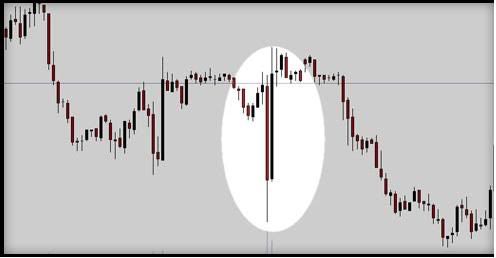What is Technical Analysis?
“Technical analysis” is an industry term that more often than not sounds much more complicated than the actual process is. Really, it ought to be referred to as “price analysis”, as this would be a more accurate description. Through the use of charted data traders around the world analyze their market of choice. The objective: determine future price movement. The means: understanding price movement patterns of the past.
The charting of price movements creates a visual tug-of-war between buyers and sellers. The large majority of Technical traders in the Forex market focus their attention on candlestick data, a method of charting that offers a visual interpretation of the high, low, open and close of a currency price within a certain time frame.

“Technical analysis” is an industry term that more often than not sounds much more complicated than the actual process is. Really, it ought to be referred to as “price analysis”, as this would be a more accurate description. Through the use of charted data traders around the world analyze their market of choice. The objective: determine future price movement. The means: understanding price movement patterns of the past.
The charting of price movements creates a visual tug-of-war between buyers and sellers. The large majority of Technical traders in the Forex market focus their attention on candlestick data, a method of charting that offers a visual interpretation of the high, low, open and close of a currency price within a certain time frame.
Combined with various forms of pattern recognition , candlestick charting offers traders a visual look at the market’s past prices and trends. Analyzing this historical data in order to predict the movements of future prices is the process known as “technical analysis”. Notice how price patterns formed on the following chart tend to repeat; technical traders attempt to identify patterns of these nature, and base their trades accordingly. ( view figure 1 )
Why Does Technical Analysis Work?
Technical analysis is often dispelled as a myth, even a fool’s errand. There are those who believe that price movement is completely random and completely unpredictable. True, technical analysis is never an exact science (predicting the future never is). However, the true fool would be he or she that ignores the power of technical analysis, particularly in the Forex market.
Analyzing price patterns is actually very similar to analyzing human behavior. While humans can at times be unpredictable in nature, humans are typically considered to be creatures of habit. The average human adheres to certain paradigms, paradigms that are rarely broken. Do you brush your teeth or shower first? Do you comb your hair before or after you shave? The point: if one were to observe an average person’s daily routine before leaving the house for work their behavior may seem random or without purpose. However, if one were to observe the same human day after day, within a relatively short amount of time it would not be hard to outline that person’s morning routine. In fact, nine times out of ten you would probably be able to predict with impressive accuracy how your observed creature would prepare for their day, perhaps even down to the minute.
The Forex market is also a creature of habit. Analyzing price movement is effective because the past can teach us how human beings (the real living and breathing organism of this market) will react to certain situations. History does repeat itself. Technical analysis offers the Forex trader a certain level of expectancy when considering future price movements. In a sense, accurate technical analysis is a trader’s true edge. There is no crystal ball for predicting the future of the market, though there are keys to understanding patterns, past, present and future.
When Does Technical Analysis Fail?
Technical analysis fails when traders fail to consider the fundamentals. Why mention fundamental analysis when explaining technical analysis? Simple, the one just doesn’t work without the other. Fundamental factors such as political events, a hike in interest rates, unemployment rates and so on will impact the Forex market more substantially than perhaps any other market. Fundamental factors are often the driving force of major price movements. A trader focused on technical analysis cannot ignore Nonfarm Payroll on the first Friday of the month and expect his or her technical indications to be as accurate as the day prior. Notice the price movement shown in the following image; shortly after Nonfarm Payroll price reactions were wild; during such times technical analysis cannot be counted on. ( view figure 2 ) Purely technical traders understand that certain political factors throw all other price forecasts out the window.



No comments:
Post a Comment